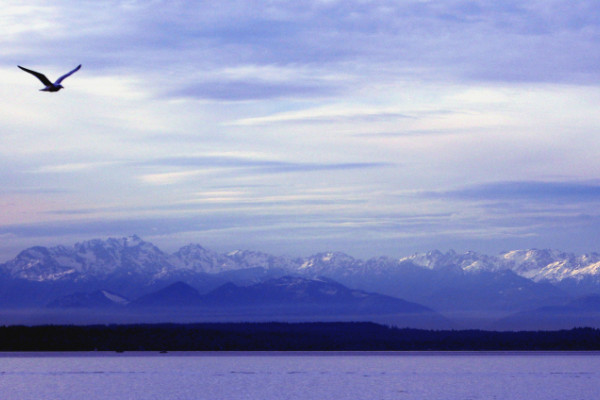Background:
Formed roughly 10,000 years ago as ice age glaciers retreated from the region, the rivers of the North Puget Sound feature a broad diversity of habitats. From their high gradients headwaters to their broad alluvial floodpain reaches the Snoqualime, Skykomish, Stillaguamish, Skagit and its largest tributary the Sauk and the Nooksack once rivaled any ecosystem in the world in terms of the diversity of productivity of their anadromous fish populations. Winter steelhead in Puget Sound are some of the largest in the lower 48 with fish routinely topping 25 pounds in systems such as the Skykomish, Stilliguamish and Skagit.
Beginning with the first large scale European settlements roughly 150 years ago, the Puget Sound has seen devastating habitat loss, overharvest, and an overreliance on hatcheries to support fisheries. Many of the floodplain reaches in the Puget Sound were long ago dyked, straightened and drained to create farmland and control flooding. These low gradient flood plain reaches contained acres of beaver ponds, sloughts and off channel habitats which are many of the most productive areas for Coho, Chum and Pink salmon spawning and rearing. The commercial timber industry which reached its feverish peak between the 1960s and 80s brought devastation to the hillslopes and riparian forests of the region which for so long slowed the transport of sediment and water through the watersheds, moderated, and provided shade as well as large woody debris for streams in our region. With the land cover in watersheds dramatically altered the hydrology of our streams became much more flashy increasing both the magnitude and violence of high flow events, scouring many stream reaches of quality spawning gravels. Massive landslides added fine sediments to stream channels that were once cobble and gravel smothering incubating eggs, increasing stream temperature and reducing habitat complexity upon which juvenile salmon depend for rearing.
By the mid 1960s wild salmonid populations in the Puget Sound were in serious decline. In search of a way to replace the harvest opportunity once presented by wild fish, the state Fish and Wildlife department turned to hatcheries. Hovever, over the last 25 years scientific research has conclusively demonstrated that hatchery fish have severe negative impacts on wild fish. Through reproductive interactions, ecological effects such as competition, predation, and disease as well as harvest impacts large scale hatchery supplementation is fundementally incompatible with healthy populations of wild fish. This is especially true in the Puget Sound. Over the last decade, hatchery stocks, particularly steelhead have performed extremely poorly routinely seeing ocean survival below 1% in many hatchery programs. In the wild, typically 10-25% of steelhead smolts survive to adulthood. With millions of steelhead, chinook, coho and chum pumped into the sound annually the ecological effects of hatchery programs on the Sound are profound. The Puget Sound is a confined glacial fjord, with a limited capacity to support rearing, and outmigrating salmonids. Additionally huge numbers of hatchery fish are likely supporting predator populations far in excess of their natural carrying capacity.
While habitat and hatcheries are problems throughout salmon´s range the Puget Sound region presents a unique host of challenges for conservation and recovery. The Puget Sound is one of the largest and fastest growing population centers in the west, nearly three million people live in the counties of the North Puget Sound with roughly 50% population growth predicted by 2040.
